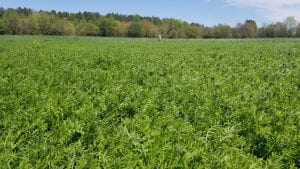Jarrod Miller and James Adkins, University of Delaware
Variability in soil land landscape characteristics reduces yield response to management techniques, particularly regarding seeding rates and fertilizer additions. Yield maps provide a spatial map of yield, which can be associated with drainage issues, soil nutrient holding, or nutrient concentrations. One method to uncover soil variability and crop response is to use precision soil sampling, including either grid or zone methods. Both increase the cost of taking soil samples, and each have their value depending on the desired outcomes.
Continue reading

